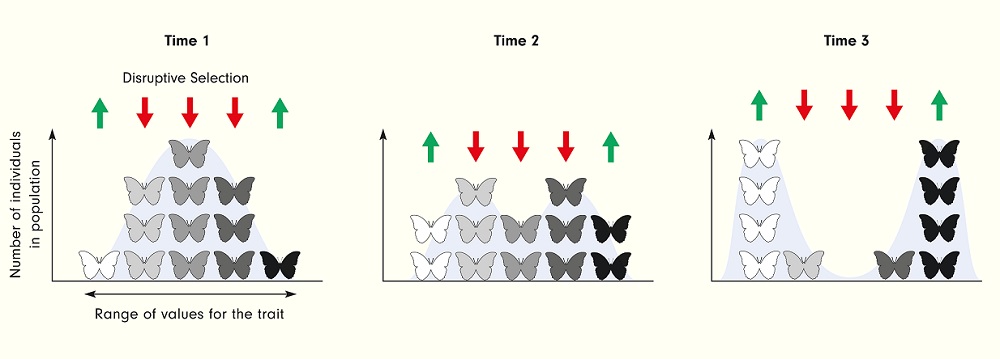[LS4-4] Natural Selection and Adaptation
This standard focuses on how the process of natural selection leads to adaptation within a population. Specifically, this standard focuses on methods and processes that allow different abiotic and biotic factors to change the frequency of genes and alleles within a population over time.
Resources for this Standard:
Here’s the Actual Standard:
Construct an explanation based on evidence for how natural selection leads to the adaptation of populations.
Standard Breakdown
Let’s look at what this means starting at genetics and working our way to the adaptation of organisms.
Natural Selection on Genetic Variation
The environment that any organism lives in creates selective pressures. Selective pressures work on the variations within a population. Though each species has a distinct set of genes that make most individuals very similar, each individual has a large number of small genetic mutations.
These mutations – when translated into proteins – cause changes in the functions of cells and ultimately cause the visible variation seen in a population. While these traits can range from coat color to an animal’s ability to digest plant material, every trait has a slight selective advantage or disadvantage.
Adaptation of Populations
As an example, let’s look at the population of butterflies that have just been introduced to a new species of bird, seen below.

At Time 1, the butterflies have a fairly normal distribution of the “shade” trait. Some are completely white, and some are completely black, but most fall in the “gray” range. This trait, ultimately, is caused by a gene that creates black pigment. Completely white butterflies produce no pigment, while black butterflies produce a large amount of pigment. This is largely a function of how quickly their “black-pigment-creating-protein” operates.
However, the birds only like to eat gray butterflies. The black ones look like holes in the tree, and the white ones are too hard to see. As the birds eat the gray butterflies, the frequency of the other two traits begins to rise. This is an example of disruptive selection. There is also directional selection and stabilizing selection, both of which show how the forces of natural selection lead to adaptation within a population.
A little clarification:
The standard contains this clarification statement:
Emphasis is on using data to provide evidence for how specific biotic and abiotic differences in ecosystems (such as ranges of seasonal temperature, long-term climate change, acidity, light, geographic barriers, or evolution of other organisms) contribute to a change in gene frequency over time, leading to adaptation of populations.
Let’s look at this clarification a little closer:
Specific Biotic and Abiotic Factors
In the example of butterflies in the above, the factor that exhibited a selective pressure on the butterflies was biotic – the birds. Species often interact in ways that change each other’s population. In the same example, the birds might adapt to the change in the butterfly population by learning to recognize white and black butterflies as food. This would again shift the trait distribution within the butterflies. Situations in which both populations are affected by changes in the other are known as “co-evolution”.
As for abiotic factors, these can have just as dramatic of an effect on populations. In fact, a great historical example is a change that the Industrial Revolution caused a drastic change within peppered moth populations. These moths, like the theoretical butterflies above, show several different color variations.

The light variations were well-adapted to many natural hard surfaces – such as the bark on aspen trees or cleanly-painted light surfaces. Before the Industrial Revolution, the black version of the peppered moth was very rare. After the start of the Industrial Revolution, unfiltered black soot started covering many surfaces – buildings, trees, and other objects near large industrial operations. However, since clean-air laws have been more widely implemented, the frequency of black peppered moths is on the decline. These moths are too easily spotted by predators in a clean environment – as such the allele frequency of the “black” allele is slowly decreasing as well! This is evolution in action – caused by an abiotic factor rather than a biotic factor!
